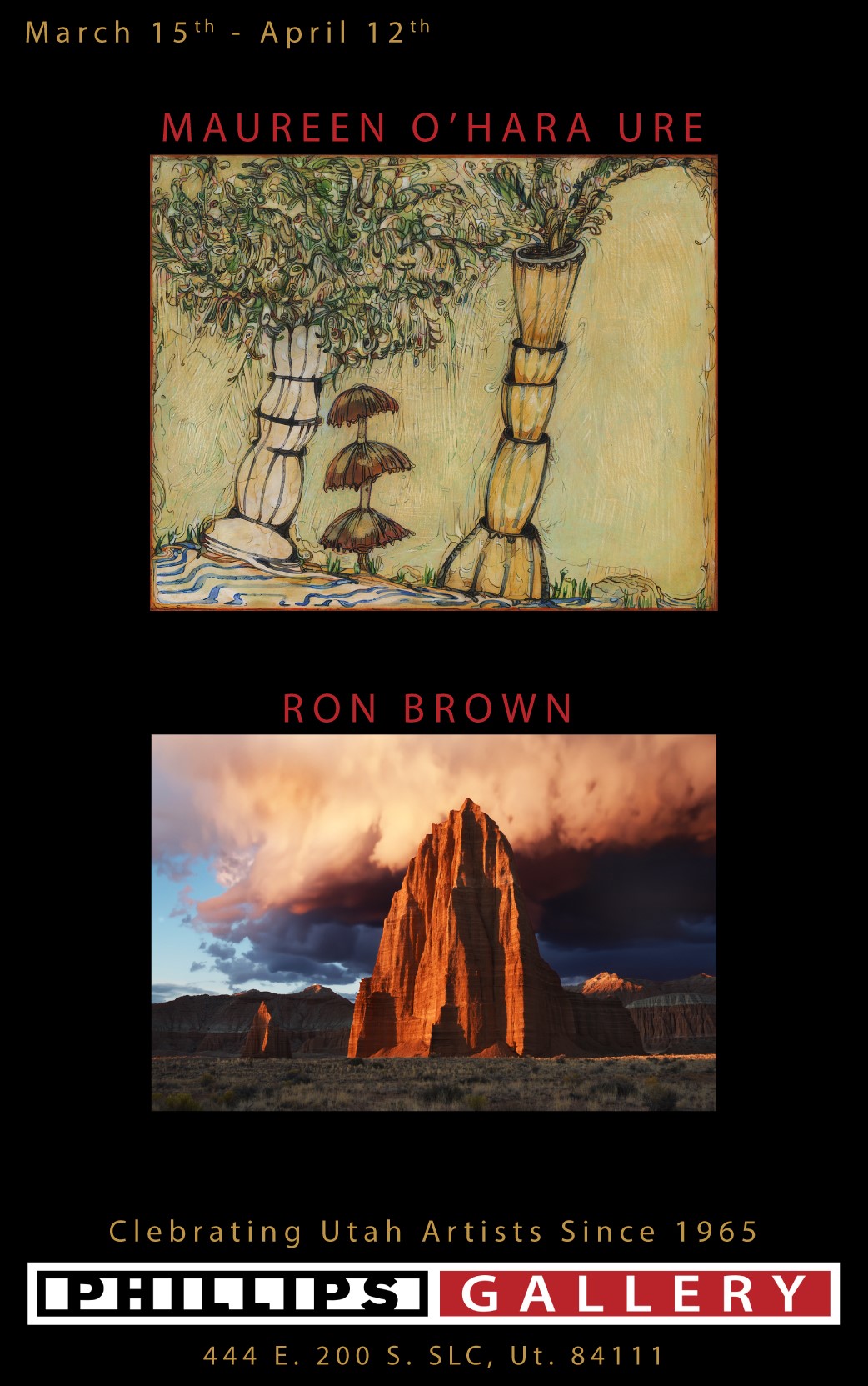Anna Betbeze’s hide-like abstractions in Dark Sun cling to UMOCA’s gallery walls, sagging slightly as they loom over the viewer with a deranged, yet mysteriously beautiful presence. Betbeze’s irregular painting surfaces are wool rugs that the artist burns, tatters and douses with ink and industrial acid-dyes. Vibrant colors bleed and stain each grisly surface, which seems to undergo a powerful transformation of either regeneration or decay.
The artist alludes to the latter in “All That’s Left,” as bright red dye pops through consuming shades of purple; the last remnants of a preexisting life. The piece’s ragged holes seem to have deteriorated naturally rather then been intentionally torn or torched by the artist. “Spring Hole,” on the other hand, emits renewal with hot pinks, blues, greens and yellows that mingle against a neutral fibrous background. Purple dye lines the top of the vertically rectangular rug, holding the abstraction in a structurally sound composition. While the artist’s materials and process are primal and unpredictable, her abstract “paintings” are well balanced and complete. Hues are layered and blended with purpose, even when the unpredictability of Betbeze’s medium resists any precise control.
While Betbeze’s rugs are visually appealing, her creations are anything but comforting and cozy. Intriguing and exciting, yes, but each piece maintains a sense of grit, leaving us recoiled at the thought of curling up among its acid-dyed shag. “Mimosa,” for example, is a layered yellow composition reminiscent of a woolly Rothko color field with a bit more grime. Its browned and yellowed threads seem dirtied and coarse, and it’s the only piece in the show that drapes onto the floor rather than over a white pedestal. Betbeze’s rugs also seem too conscious to be consoling — like a Nick Cave soundsuit that’s been skinned and hung out for drying but could resume movement at any moment. “All That’s Left” also reminds us of a Wild Thing that’s been de-robed or under-the-bed monster that’s been debunked. “Fog Bottom” has an equally fantasized appearance while offering a reverse perspective, which further denotes Betbeze’s process as a symbol of time passing or of nature’s primordial cycles. When viewed in opposition, we can see the effect Betbeze’s pooling medium has on her rug’s porous surface, which visually references water as another natural element of eroding change. Dyes bleed through the woolly fibers and permeate their smooth backing in uneven glazes. For this patchwork piece, the artist crudely stitches and layers her textile scraps together, bringing them into an assemblage that reassures us of its manmade existence. Manic fluffs stray from the edges of each fabric square, a recurring shape throughout the exhibition, leaving a distressed and crazed quality to the work.
With her decimated and re-contextualized wool rugs, Betbeze is “using destruction as a force of creation,” as the curatorial notes suggest, for a conceptually riveting and visually engaging body of work. Beginning with the exhibition’s juxtaposed title, the artist offers metaphorical dichotomies through her process and presentation that relate to death/life, abandonment/care, beauty/dejection and more, allowing the viewer to interpret the show through many lenses. Each tactile piece bridges a relationship between painting, sculpture and architecture.
Betbeze also includes a new series of works on paper in Dark Sun that complements her large-scale wool abstractions. Curated in a single row that curves across the back three walls of the gallery, these raw, saturated sketches provide insight into Betbeze’s painting process and keen sense of color relationships. The individual artworks are not nearly as riveting as their dominating wool counterparts, but when viewed as studies they allow for illuminating observation and contemplation of the artist’s techniques and experiments in color. The pieces are meant to be taken as a whole, however, as they are collectively named Untitled (Holes, Heads, Bowls).Watercolor is the dominant medium, illustrating the artist’s fascination with pervasive painterly effects. While Betbeze’s works on paper command a less imposing and visceral response than her signature wool rug paintings, they offer a visual appeal and further intrigue within the context of the exhibition.
Betbeze aims for a multisensory experience in Dark Sun, which she achieves through a process evocative of 20th-century gestural abstraction, likening herself to a modern-day Helen Frankenthaler with a bit more edge. Based in New York, N.Y., the Alabama-born artist received her BFA from the University of Georgia and her MFA from Yale University School of Art. Betbeze’s solo exhibition is a result of the artist’s honor as recipient of The Catherine Doctorow Prize for Contemporary Painting, awarded every two years by The Jarvis & Constance Doctorow Family Foundation in collaboration with UMOCA to an innovative contemporary painter residing in the United States.
“Anna Betbeze: Dark Sun,” UMOCA, Salt Lake City, through Jan. 13, 2018.
Kelly Carper is an Ogden-based arts writer with a background in Santa Fe’s commercial gallery world in sales, marketing and management. Her current freelance work extends from arts journalism to gallery marketing and can be found at kellycarper.com.
Categories: Exhibition Reviews | Visual Arts













